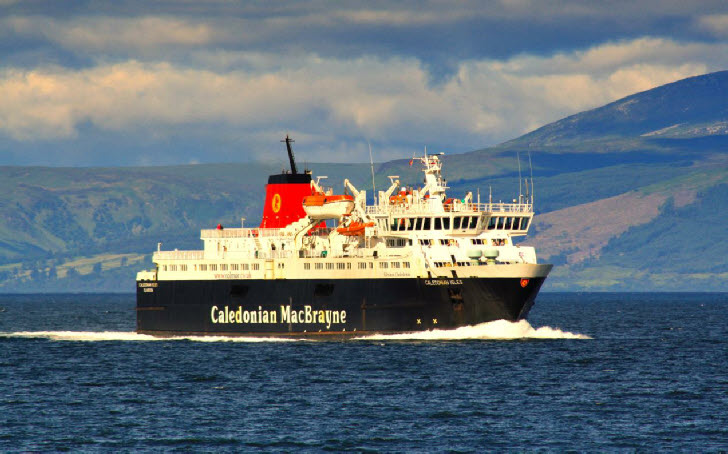Mammoth task to repair serious steelwork defects rule major CalMac ship out of action for summer
24 April 2024
Extensive repairs to replace a significant area of corroded and weakened metal within MV Caledonian Isles’ internal structure will now take around an extra ten weeks to complete.
The 31-year-old CalMac vessel will not return to service until after the Scottish
school holidays said the shipping operator which means she will not be available
to cover her Arran route during highest traffic periods.
Cutting out and replacing worn and aging steelwork in an extremely awkward location beneath her engines was previously estimated to cost £5 million.
At the outset, the task was fully expected to be difficult and time consuming. But it was only when repairs got underway in dry dock in Birkenhead on the River Mersey, was the wider complexity of the problem uncovered.
CalMac previously highlighted the sequence of repairs need to be staggered in a planned, coordinated manner “rather than all at the same time” to maintain the vessel’s structural integrity.
In recent days it emerged repairs will take “significantly longer” than anticipated.
CalMac’s interim chief executive, Duncan Mackison said: “MV Caledonian Isles is now expected to return to service by the end of August.
“We know this news is disappointing, particularly for people on Arran, which is normally served by the vessel.
“We issued a revised summer timetable when we knew MV Caledonian Isles would be unavailable for a significant period of time.
“That timetable will remain in place until she is ready to return, though we will continue to explore what we can do to support the service on that route.”
Mr Mackison said an estimate of repairs provided in February had been liable to change after a full analysis of the vessel’s repair needs.
“The nature of the vessel’s structure is such that this analysis has been ongoing alongside repairs.
“This is a highly complex repair effort where we have to be mindful of the vessel’s age and condition.”
As part of the works, the generators and their bedplate supports were removed from the engine room deck to access the double bottom water ballast tank tops.
The structure below the main engines is being supported using hydraulic jacks, whilst the steel around these engines is renewed.
The twin engines need to be lifted off their bedplates to allow access underneath for renewal of the tank top steel directly below the sump.
“With our partners, we exhausted every possible avenue to avoid removing the engines, but this is the only way to complete the works to the standard required, “explained Duncan Mackison.
“Our aim is to get the vessel back into service as quickly as possible, and it is in that spirit that we are in regular contact with the dry dock operator, which is working around the clock to complete these repairs at speed.”
Recently, CalMac said a proposal to place MV Isle of Lewis on the Arran route was not viable as design issues leaves her susceptible to machinery cooling system issues associated with debris in the water at Troon. This is unique to the design of this vessel and the berth at Troon.
CalMac also considered removing MV Hebrides from Harris and North Uist to cover the Arran route with MV Alfred transferred north to the Skye triangle. This idea was rejected due to a predicted shortfall in service on the Little Minch failing to meet demand.
The current interim plan involves operating a service to Arran from both Ardrossan and Troon, due to a lack of suitable berths at Ardrossan.
